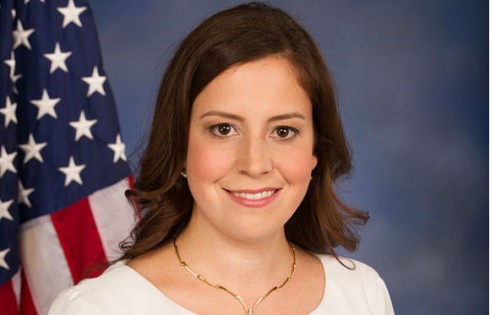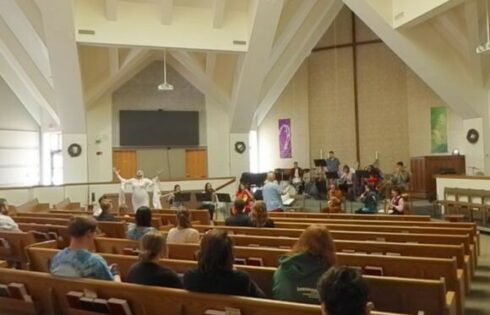
Executive salaries within the California State University system have outpaced full-time instructors over the last 15 years, according to an analysis from CalMatters.
California State University Chancellor Mildred Garcia is just shy of making $1 million in compensation in her first year of leading the nation’s largest higher education system, while Gov. Gavin Newsom’s total compensation is listed at $290,000.
That’s a total of $710,000 more per year, or more than three times the governor’s annual compensation.
In July, the Cal State Board of Trustees voted to increase Garcia’s pay by 27 percent.
“They approved a $795,000 base salary for Garcia,” reported CalMatters, a nonprofit news agency. “Additionally, $80,000 in deferred compensation, a $96,000 annual housing allowance, and a $1,000 monthly auto stipend brought her total compensation package to just under $1 million a year.”
Executive salary increases have come under increased scrutiny as faculty union strikes continue to take place across California after unsuccessful salary negotiations with the CSU.
Lance Christensen, an education policy expert at California Policy Center, told The College Fix administrative bloat is an issue facing California’s higher education today.
“The CSU chancellor should not be making more than the governor of the state of California. That said, the leadership of the CSU system is determined by a progressive board of trustees who lost sight of the real reason the system exists in the first place,” Christensen said via email.
After voting to raise Garcia’s salary, in September the Cal State Board of Trustees also approved multi-year tuition hikes for students in the midst of the system’s looming $1.5 billion budget deficit.
Based on the analysis using publicly available data, CalMatters found that the chancellor position has seen a substantial 38 percent growth in salary over the last 15 years, a stark contrast from the three previous chancellors.
Over that same 15-year period, Cal State campus presidents have had a 43 percent increase in their base salaries, according to the outlet.
Meanwhile, CalMatters reported faculty salaries remain far more stagnant, with lecture salaries increasing 22 percent over 15 years and professor pay growing 30 percent since 2007.
In 2022, full-time CSU faculty made $99,000, part-timers made about $67,000, and lecturers averaged $50,000, according to the California State University’s published data.
“Managers stated that increases are inadequate, infrequent, unpredictable, and often have no relationship to merit,” said CSU employees in a survey cited by CalMatters.
Christensen told The Fix that’s a problem.
“Any raises to professors should only be done for those who actually add value to the system and within current resources and only after the bureaucratic bloat can be significantly trimmed,” Christensen said.
Editor-in Chief of the California Globe Katy Grimes told The College Fix that managers generally do make more than their employees.
“Their conclusion that average salaries have increased ‘disparately’ is erroneous in that why should chancellors, campus presidents, full profs and lecturers be on the same salary trajectory at all,” Grimes wrote in an email to The Fix.
Judith Wilde, a professor at George Mason University, told CalMatters the reason for the upward trend in salary increases for administrators is a desire to hire candidates with corporate leadership experience.
One campus president told CalMatters that salary increases are necessary to compete with other universities who offer higher pay to candidates.
But Grimes told The College Fix the news organization didn’t do a deep enough dive into why exactly the salaries are so high, how long their pay has been rising, and “the growing administrative fat and DEI waste at state universities.”
“The growing salaries started with the explosion of student loans and the commensurate increase of tuition at nearly every university/college in the country,” Grimes wrote. “And when the Obama administration nationalized the student loan system, university/college costs grew, and continue to grow exponentially.”
The Globe recently reported that the public sector unions, such as faculty unions, pose more difficulties than private sector unions. Over the years, they have amassed political influence by spending hundreds of millions of dollars to elect candidates who align with their interests.
Grimes said the consequences of these teachers unions have been destructive, allowing for the increase in salaries and “administrative bloat” to take place.
“Rather than address the core issue—what is the purpose of our public higher education system in California—teacher unions are leveraging their kids in the middle of the school year to fight for a race to academic irrelevancy,” Christensen told The College Fix.
“Students continue to suffer as pawns in the war between an oversized administrative state and teachers unions who care more for their salary than their students,” he added.
The CSU did not respond to multiple requests for comment from The College Fix.
MORE: UW-Madison employs one administrator for every four undergrads
IMAGE: Cal State University
Like The College Fix on Facebook / Follow us on Twitter






Please join the conversation about our stories on Facebook, Twitter, Instagram, Reddit, MeWe, Rumble, Gab, Minds and Gettr.